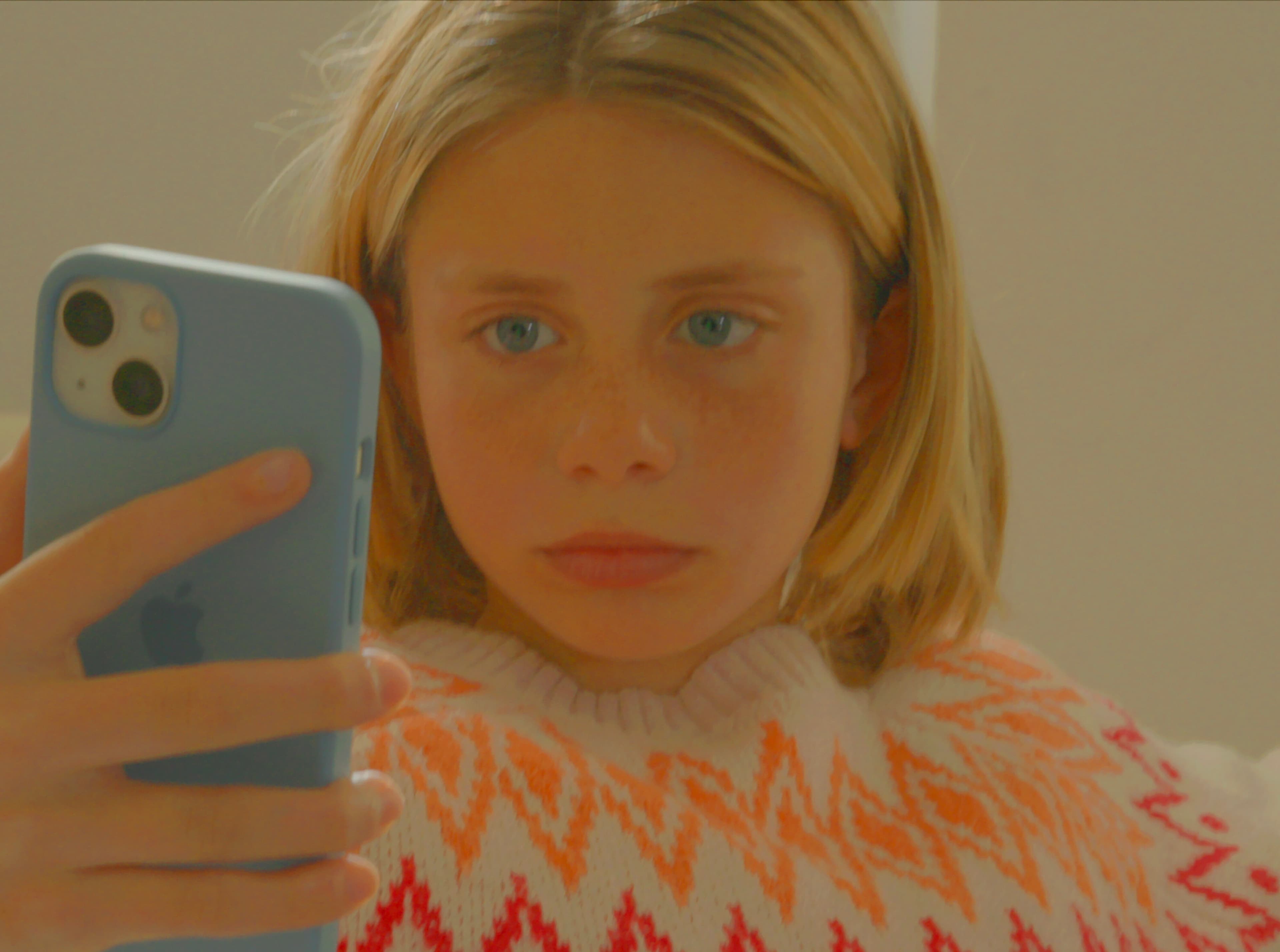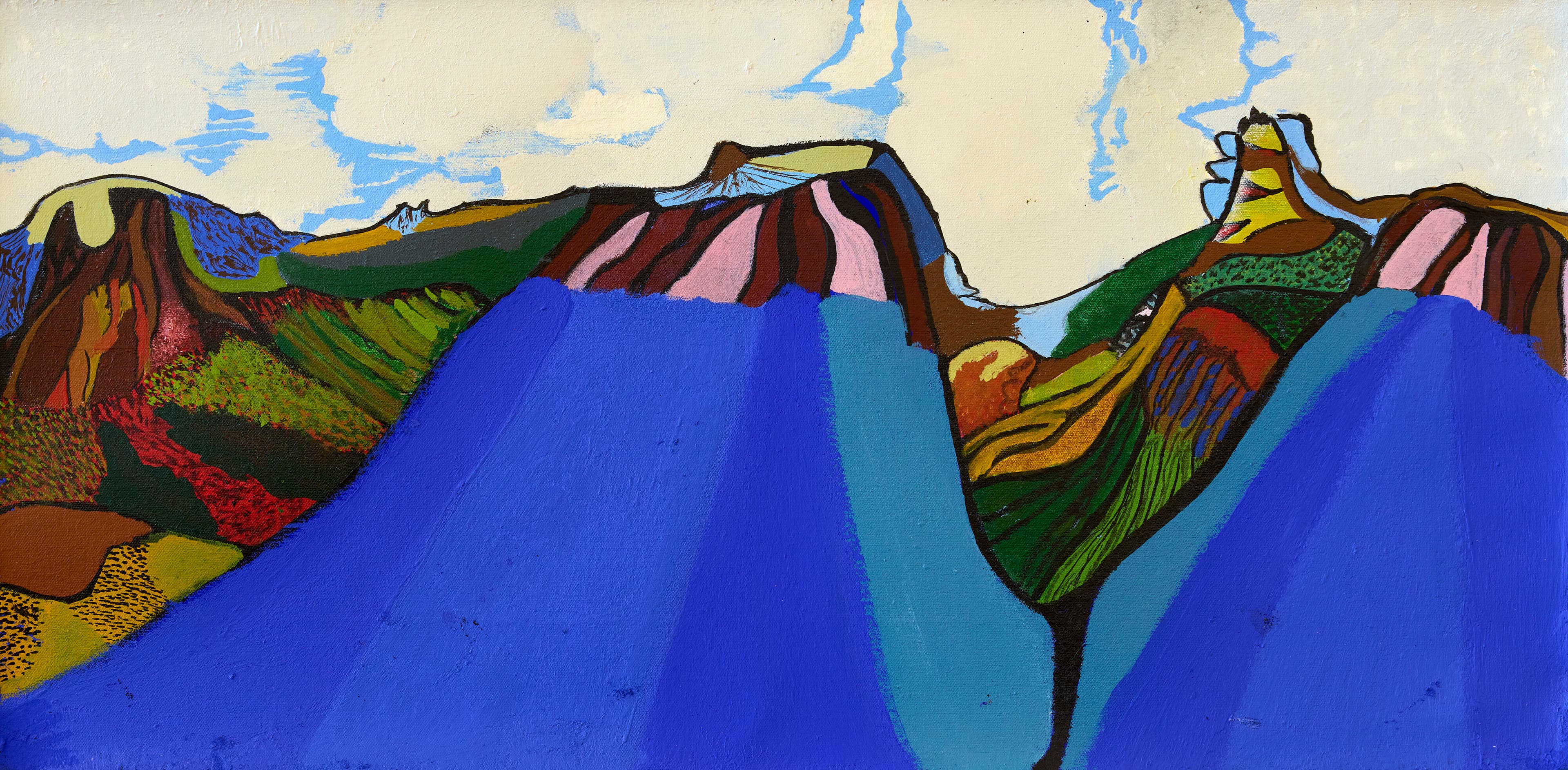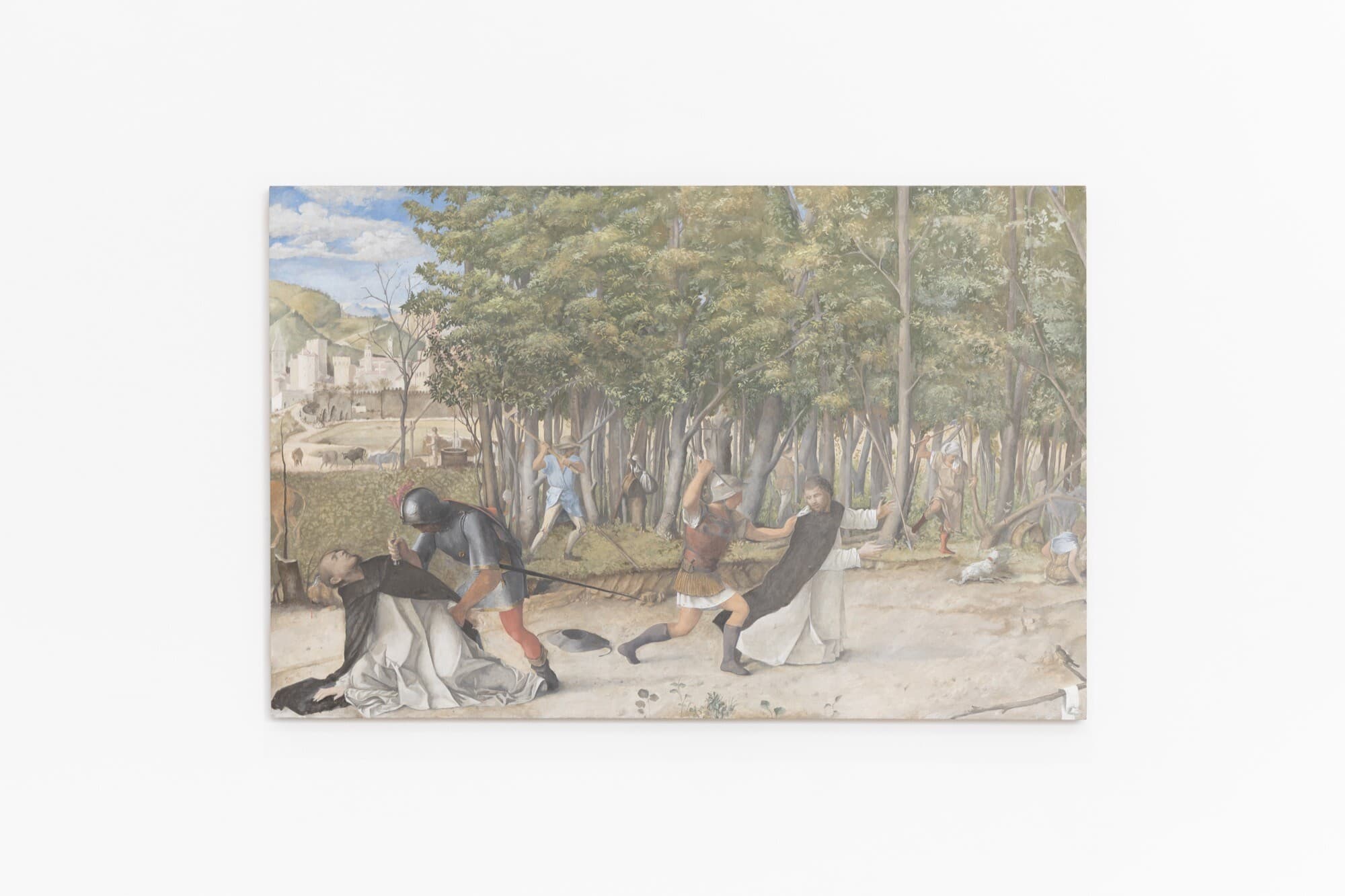Gabrielle Chanel. Fashion Manifesto
Kate Meakin
The blockbuster fashion exhibition is an event that people, primarily women, dress up to see. Marketed to the general public through popular fashion media in paid partnership with the luxury house of Chanel, Gabrielle Chanel. Fashion Manifesto aims to draw in a fashion-conscious crowd and draw out the fashion consciousness of others. To point out that this exhibit is a branding exercise is an easy observation to make. Visiting the show I am struck by the degree to which the life and work of Gabrielle Chanel (1883–1971), who famously claimed “A woman who doesn’t wear perfume has no future”, still resonates with so many people. My mother, who accompanied me to the exhibition, is one such person. She wore a beige and black ensemble topped off with a faux Chanel 2.55 handbag. Mum was excited to see the original bag in the show because she had recently learnt it was designed in 1955—the year she was born. It seems fateful that she should own its copy, as if she has discovered a missing part of herself. I find her at the NGV café with my aunty, who is inspecting the burgundy interior of her purse, marvelling at how it is both convincing as a designer artefact and practical with so many compartments. The only marker of its inauthenticity is the lack of branding on its zips and leather interior, which only those permitted to case through its private contents would have the privilege of seeing. The incorporation of different-sized organisational pockets within a handbag seems a ubiquitous feature now, but it was an innovation at the time of this bag’s release, as was the gilt chain shoulder strap. “Tired of holding my bags in my hand and losing them, I added a strap and wore it over my shoulder”, Chanel remarked. One pocket is deigned to hold lipstick, another love letters. To the naked eye, this bag could be one worth $14,000. It is hard not to first consider the price tag of Chanel products before contemplating the meaning of their form when encountered on the bodies of others. The exposure of its counterfeit nature could be met with feelings of shame or amusement, depending on where your sense of pleasure lies.

“It feels as if here is a woman, an artist, looking for a formula, an articulate formula that will serve her through her entire life. And she did it—I mean she totally pulled it off”, Tilda Swinton pronounces in enthused thespian tones in the video trailer for the exhibition. What the formula might be cannot quite be extracted from these words, but the importance Swinton’s androgynous, aristocratic stature lends to them takes us half way to learning something about Chanel’s contribution to the art of sartorial dress. Actresses appearing “out of character”, or as themselves, are the ultimate fashion models as their occupation necessitates the transformative use of clothing to become “someone”. Themes of self- discovery, self-expression and self-sufficiency run though through the marketing and wall labels of this exhibition like the script of a Hollywood melodrama.

The exhibition is structured chronologically from 1912, when Gabrielle “Coco” Chanel opened her first boutique in Deauville, though technically her first retail venture was a ‘pop-up’ shop of sorts on the ground floor of a wealthy lover’s Parisian apartment. The show unfolds as both a historic archive of the designer’s work and the emotional dramas that ran parallel, traversing the social disadvantages of her childhood in an orphanage to the reinvention of herself as one of the giants of 20th-century fashion. Her desire for, and triumph of, class ascension is often placed at the ‘heart’ of the Chanel story; and in a period when women’s social and economic status was primarily defined by their relationship to men, Coco became the mistress of many affluent gentlemen, who in turn aided her in the financial matters of starting a business. Large lightbox portraits that populate the exhibition eloquently illustrate the close relationship between the evolution of her style, sexuality and class position. Gabrielle Chanel at a racecourse in the south of France (ca. 1907–8) depicts her standing atop of a bench as she peers across a race track. She is dressed in a man’s coat and tie and small straw boater hat of her own design, hands thrust deep into her pockets, which were seldom a feature of women’s wear at the time. If you can recall the Royal Ascot scene in My Fair Lady, this is like the sartorial equivalent of Eliza Doolittle suddenly screaming “move your bloomin’ arse” amongst the mannered gentry. Chanel was the live-in mistress of a bourgeois gentleman at the time and here she is wearing a mix of his and her own clothing, a stance that is not simply a gesture of uncouthness, but an assertion of modernity—a re-gendering of the social order, but tied to the symbolic language and values of the social elite. Her first line of garments made from simple jersey fabrics in elegant, corset-free cuts that allowed for freedom of movement were designed to fill a gaping hole in the market for practical women’s athletic leisure wear—a problem that may seem hard to imagine in the present era of “athleisure”.

As we progress forward to her couture years in Paris, there is a striking portrait by François Kollar, which was taken as an advertisement for the signature fragrance Chanel N°5 in 1937. Chanel is pictured leaning against the fireplace of her ornate suite in Paris’s Ritz Hotel. She is wearing a hyper-feminine black lace and tulle dress of her own design—an evening wear iteration of her Depression-era masterpiece, the “little black dress”. Her arm stretched across the stone mantle, she is basking in her ownership of the space, while also posing as if waiting for a lover to arrive. The silhouette of the dress itself is fitted, though importantly takes her own body as its line of departure rather than seeking to augment the waistline in order to make the dress work. The didactics describe this gesture as “emancipated”, although a compositional narrowing of the waist remains a central element in the structure of most of her gowns beyond the more cylindrical structures of the flapper years. Dior is said to have commissioned custom mannequins to be constructed with exaggerated feminine proportions to serve as the blueprint for his “New Look” designs. Chanel’s own body was always her first draft. The importance of this distinction as a marketing strategy is profound in its ability to generate a direct psychic transference between the life of the designer and her prospective customers, as well as situate the realm of luxury as a site of women’s liberation.
The importance of maintaining her possession of this particular room raises the matter of Chanel’s “horizontal collaboration” with a senior Nazi Officer during WWII, which afforded her the privilege of carrying on a society life during the Vichy Regime. Her relationship with Nazism is often omitted from her biography, as if too complicated to even mention, and the curatorial censorship of the company is felt in the pitiful wall label that explains the fifteen-year gap in her couture activities as one of a decision to “move away from the world of fashion” after a “brief interrogation” at the end of the war. In recent years declassified documents have revealed that it was more than an affair of convenience, implicating Chanel in German Intelligence operations that required her to engage with and inform on aristocratic targets around Europe. She closed her couture business at the beginning of the war in 1939, publicly stating “this is not the time for fashion”. It was also conveniently a moment when her four thousand, mostly female workers were demanding a wage rise. Antisemitic laws also afforded Chanel the right to claim full financial ownership of her business and perfume line, which was seventy percent co-owned by prominent Jewish businessman Pierre Wertheimers. For an exhibition to deal seriously with the legacy of a luxury fashion house, it must shift the opaque discourse of the shop towards that of the museum. This ideally would allow space for discussion of the complexity and contradictions inherent to the fashion industry. If we are to believe Chanel as someone who “overturned codes to create new ones”, empowering herself and other women in the process, as the exhibition copy suggests, we must also be able to examine how she was able to break ethical codes in profound ways.

Before opening her first store, Chanel had briefly attempted a career on the cabaret stage, but a mediocre singing voice is said to have steered her away from this fate. Throughout her career, she maintained an engagement with the performing arts vicariously by dressing the bodies of other actors: from hats adorning the heads of actresses on and off the 1910’s Parisian stage, to those of screen icons Anouk Aimée, Catherine Deneuve and famously Delphine Seyrig in Alain Resnais’s 1961 film, Last Year in Marienbad. A panel of screens display looped reels of Seyrig’s billowing outifts from the film. She moves slow and dreamlike through the palatial grounds of the film’s setting—suspending her figure in a constant loop of apparition. Marienbad focuses on the recollections of an unreliable narrator grappling with the inability to distinguish fantasy from memory through his desire for the beautiful, inscrutable Seyrig. This landmark of avant-garde cinema could be viewed as the archetypal model for the contemporary fashion film—nameless characters wandering the parameters of an intensely stylised, narratively ambiguous realm. Such strategies of fragmentation can work to give license to the audience to interpret or inscribe their own meaning onto the art object. In advertising, the fragmentation seeks to lead us back towards a mood board of fetishised objects.

The protagonist’s confusion is spatialised throughout Marienbad through the layering of and conflation between gilded doors, mirrors and windows. Upon arriving in the NGV foyer, visitors are invited to gaze up at themselves through a mirrored ceiling as they stand atop of a large reproduction of a Naminapu Maymuru-White painting. As Tristen Harwood recently noted in his review of the Bark Ladies exhibition across the hall, the constant meeting with one’s reflection turns the exhibition into “a stage for the proliferation and remediation of a viewer’s individual selfhood and a low-cost marketing apparatus … large mirrors framing the artworks encouraged viewers to take selfies with the bark paintings and larrakitj, to see themselves as integrally visualised in the work and extend the curation to their chosen social media platform”. This scenography troubles the reading of the Bark Paintings, divorcing them from the intimacy of their original scale and materiality and repositioning them as props in a high impact exhibition design—into a circuit of spectacle and commodity.

Indeed, glass cabinets, mirrors and other polished architectural protrusions frame and filter the entirety of the Chanel exhibition—you can’t really steal a moment away from your figure or those of the primarily female audience around you. This invites bodily projections of both fantasy and frustration from the viewers. I hear several murmurs around me as fingers point towards garments: “If I had the figure”, “If I won tattslotto”, “This is the one I would take home”. My mother whispers to me, “If I was your age”. The kaleidoscopic design is in part a homage to the mirrored multi-panelled art deco stairwell that has been a signature feature of the 31 Rue Cambon store since 1918. Installed at the threshold between Gabrielle Chanel’s private apartment and public boutique, many iconic photos depict her sitting at the top of the stairwell as models parade down towards an audience, their couture-fitted figures reflected tenfold from all angles on the walls behind them. The fifth step from the top of the stairs became a panopticon from which Chanel would observe her clients’ responses to her new designs. NGV attempts to restage this setting as the exhibition’s finale via a circular selfie booth replicating the architectural façade of the stairwell. Wall-length digital screens replace mirrors to feed your figure back to you through a black-and-white filter, as a staff member mediates the queue of women waiting their turn. Perhaps Chanel’s formula could be this dazzling mode of audience engagement—the building of a continuum between capitalist excess, life and art.

A story was told to me by my aunt during the course of my exhibition visit. As a good Catholic, my Great Aunt Mary would buy a fish every Friday to cook for dinner that evening. In her twilight years, she would treat herself to a city outing to perform this task at the Vic Market, before catching the tram to the NGV where she was a member. Fish enclosed, she would cloak her purse at the front desk before making her way to the tea room. Here she would take advantage of the complimentary biscuits, tea and coffee and read the paper, before observing a small section of the gallery. Alzheimer’s slowly took hold of her before the end of her life. She began to forget things, and on one or two occasions she left her purse and fish in the cloak room overnight, meaning the staff were greeted by the waft of room temperature seafood the following morning. Recognising the culprit, they developed a system of asking her if she needed anything refrigerated upon arriving. Staff would carry her fish across the foyer to the café fridge and try to catch her as she departed, since she often forgot to retrieve it. During my time as a student at VCA, I would run into her sometimes as she made this journey on St Kilda road in her Sunday best. Mary would not recognise me, but would often return my gaze with a blissful, vacant smile. I wonder if, in this fog, she might leave the Chanel exhibition and when turning towards the city, mistake the spire above the Arts Centre for the Eiffel Tower.
Kate Meakin is an artist based in Naarm/Melbourne. She is currently undertaking a PhD in Fashion and Textiles at RMIT University.


